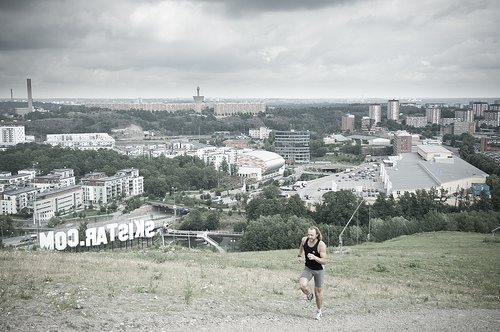
Hill Running -The Only Way is Up (And Down, And Up Again)!
Hill running can be a great addition to your running training. When you run over hilly terrain, your leg muscles have to cope with different striking angles. When you run downhill there's a lot of pressure on your quads and when you run uphill there's a lot of pressure on your hamstrings and glutes, so when you get back to flat surfaces you've built up some power reserves for final sprints, or for when you encounter hills on your regular running routes. If you've been running for a while and are looking for a new challenge, hill-running can be it. There's the option to run on hilly terrain like the road running you're more familiar with, or on mountainous terrain so steep it's almost like climbing. Hill running is many experienced runners' next step - and many competitive flatland racers' secret weapon!

Let The Music Guide Your Steps - And Lift Your Spirits
Listening to music can help you when you're running by giving you something to focus on. For many people, rhythmic music with a beat close to your running rhythm is a good choice, so you can time your breathing and foot strikes to the music. Studies show that music lowers perception of effort, making tasks feel easier - one reason why gyms usually have background music. When you're running, you can use the different speeds of music to vary your pace, or lay out a playlist that matches the terrain you're running over. Playlists that start out slower and speed up to a 'climax' can work well, as can the ebb and flow provided by classic albums designed to be listened to in their entirety.
- Important notification about information and brand names used in this slideshow!
- Photo courtesy of John Loo by Flickr : www.flickr.com/photos/johnloo/2448218920/

Interval Training - A Challenge Like No Other
Interval training is the hot new thing in the fitness world, with Tabata and other HIIT (High Intensity Interval Training) protocols a part of every coach's arsenal. But intervals can be incorporated into regular running sessions too. One simple way to incorporate intervals into your runs is to use something on the street, like blocks or lampposts, as distance indicators. Run fast from one lamppost to another, then run slow to the next one, and so on. While the distances might not be perfect, they're an easy guide. Another method is to take a stopwatch - extremely cheap online, or bundled into most mobiles these days - with you and run fast for specified times. Usually between 20 seconds and a minute is a good time. Since intervals usually require a variation in heart rate, what you're training when you run them is partly your ability to make the effort and partly your ability to recover from it. That means your regular runs will benefit from bursts of power on hills, and if you race, intervals can give you an edge, especially for medium-distance runners.
- Important notification about information and brand names used in this slideshow!
- Photo courtesy of Ed Yourdon by Flickr : www.flickr.com/photos/yourdon/3049152556/
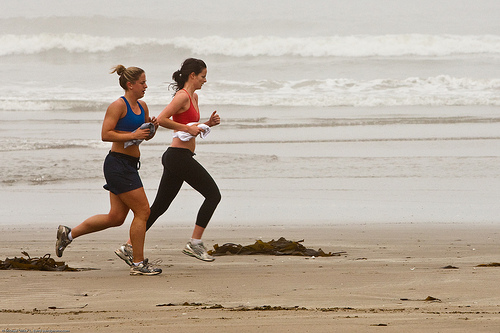
Find Yourself a Training Partner And Learn to Love Running Again
The worst thing about my old training partner was the way he'd show up whenever we'd arranged to meet, with all his gear and ready to go. It used to drive me crazy - but it was clearly also the best thing about him, since training with a partner has been shown in studies to improve your performance. One great benefit it has is that it tends to make sure you're in the gym or on the road when you're meant to be, but another is that you can bully, encourage, cajole and persuade each other to try harder and do better. A good training partner is worth their weight in gold.
- Important notification about information and brand names used in this slideshow!
- Photo courtesy of Mike Baird by Flickr : www.flickr.com/photos/mikebaird/3539161615/
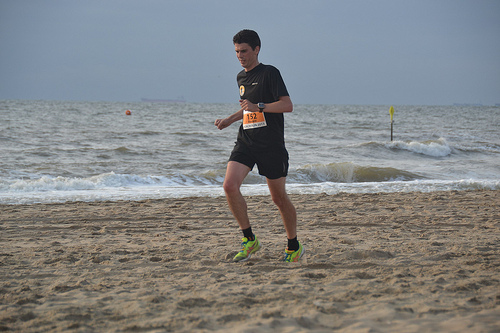
Get Off-Road - Try Running Mountain Tracks, Forest Paths, Or Just the Park
Running on roads is easier than running off them, that's what roads are for. But they also have to be hard enough to withstand a constant beating from feet and vehicles - which means they're really a bit too hard to run on. Running off-road can help your feet recover from soreness faster by being softer. On the other hand, when you run on roads your feet strike the floor exactly the same way each time. But when you run off-road, that can't happen, because the surfaces are uneven. Even well-kept lawns and parks have more uneven floor surfaces than roads and pavements. And if you get onto mountain trails or running in the woods, you'll be challenging the muscles in your hips, knees and ankles as well as in your feet that control the angle your foot lands at, resulting in improved balance and less soreness.
- Important notification about information and brand names used in this slideshow!
- Photo courtesy of Erik Blokhuis by Flickr : www.flickr.com/photos/erikblokhuis/9334444007/

Set Yourself Some Running Goals, and Hit Them!
Setting goals is the first step to achievement. That's so obvious that we often tend to forget it, but what do you want out of running? 'I want to get fit' is so nebulous that it's a wish, not a goal. You don't need to be hard on yourself but translate that desire, 'I want to get fit,' into something you can measure, like, 'I want to run a 5-minute mile.' Then aim for that. When you get there, not only will you be considerably fitter than most people but you'll have a better idea of where to go next.
- Important notification about information and brand names used in this slideshow!
- Photo courtesy of Rob Nguyen by Flickr : www.flickr.com/photos/rob_nguyen/6598712007/

Master Your Running Technique To See Big Changes
Mastery of technique is something that many leave until 'later.' But very good athletes pay technique a lot of attention. Whether that's track and field athletes, Olympic weightlifters or target sports people, the best are obsessed with getting their movements good and then tightening down the tolerances, making each repetition more perfect and more exactly like the last. You don't have to want to join their ranks to take a leaf out of their book and work on your technique. If you can't justify spending the money for a professional gait analysis, try getting a friend to film you running. The best way is to be filmed without knowing it, because when you know the camera's on you you run differently. Then watch the film for clues, and prepare to be horrified! An alternative is to run on a treadmill in front of a mirror, something you could go to a gym to do even if you're not a member, but we often run differently on treadmills so this is a far less reliable method. Getting your running technique in order in terms of gait and torso angle can make a huge difference in the efficiency of the way you...
Mastery of technique is something that many leave until 'later.' But very good athletes pay technique a lot of attention. Whether that's track and field athletes, Olympic weightlifters or target sports people, the best are obsessed with getting their movements good and then tightening down the tolerances, making each repetition more perfect and more exactly like the last. You don't have to want to join their ranks to take a leaf out of their book and work on your technique. If you can't justify spending the money for a professional gait analysis, try getting a friend to film you running. The best way is to be filmed without knowing it, because when you know the camera's on you you run differently. Then watch the film for clues, and prepare to be horrified! An alternative is to run on a treadmill in front of a mirror, something you could go to a gym to do even if you're not a member, but we often run differently on treadmills so this is a far less reliable method. Getting your running technique in order in terms of gait and torso angle can make a huge difference in the efficiency of the way you run and will do more than any other single factor to protect you from injury long term.
- Important notification about information and brand names used in this slideshow!
- Photo courtesy of lululemon athletica by Flickr : www.flickr.com/photos/lululemonathletica/4535733031/
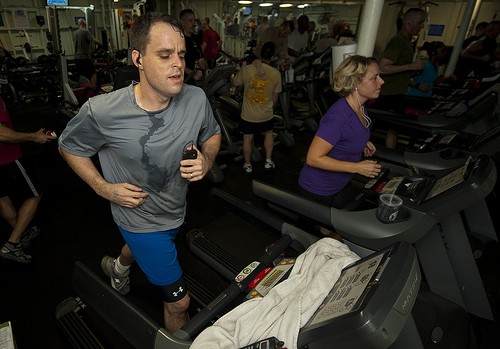
Listen to Something New - A Book, the News, or a Radio Series
Listening to music is useful because of the rhythm. But much of the reduction in perceived effort comes about because music is so efficient at distracting us. And after a while, it's less effective. If you always listen to the same things when you run they'll start to get stale and they won't give you the same results. By running wile listening to something that you don't know all the words to, you'll distract yourself sufficiently that you'll perceive yourself to be making less effort, so you'll be able to try harder. The other advantage to this is that you'll be in a far more receptive state to learn the material you're listening to. That's why you know all your 'running songs' off by heart in the first place: because half-listening while you exercise is a great way to learn things without noticing. Try it!
- Important notification about information and brand names used in this slideshow!
- Photo courtesy of Official U.S. Navy Page by Flickr : www.flickr.com/photos/usnavy/7979365655/
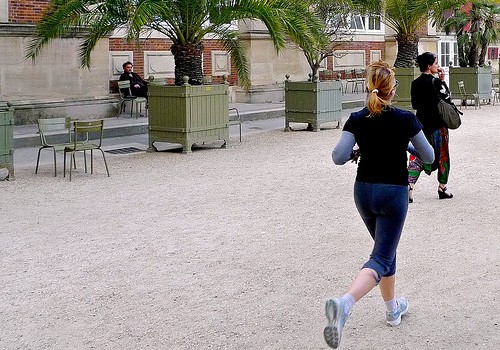
Vary Your Running Route
Vary your running route to prevent yourself from falling into a rut. When we do the same thing at the same time, we stop trying so hard and things become stale. If you stick at the same route for too long you're encouraging your body to get better at running that route, too, instead of getting better at running, period. As a result you can find that your times over your normal route can be misleading because of your familiarity with the terrain. You know just when to speed up and slow down, just where all the hills are - and that's part of the final problem. Running the same route every time can be so dull you don't even want to do it at all. Vary your route and you'll have something to look forward to.
- Important notification about information and brand names used in this slideshow!
- Photo courtesy of zoetnet by Flickr : www.flickr.com/photos/zoetnet/4850589061/
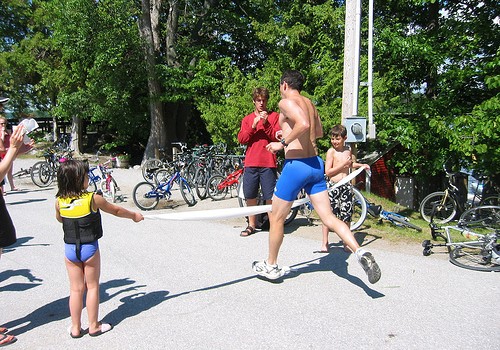
Remember to Enjoy Running for Its Own Sake
Remember that running is only supposed to be a drag some of the time. If you're not consistent you won't make progress and that means dragging yourself out of the house to run when you don't feel like it. But you can also turn running into just another chore, and then before long you'll find excuses not to do it. In fact it's easy to take something like running so seriously you wind up not doing it at all. Try to set aside some days, or some sessions, to be a little more open-ended. If that sounds like it conflicts with the earlier advice about goal-setting, it doesn't. You just need to plan a bit of recreational, purely fun running into your days. Run with friends somewhere with lots of people, or with great views, and remember why you fell in love with running in the first place.
- Important notification about information and brand names used in this slideshow!
- Photo courtesy of Scott Ableman by Flickr : www.flickr.com/photos/ableman/144371602/







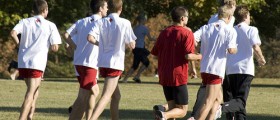




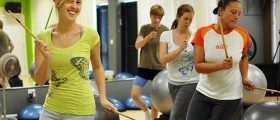

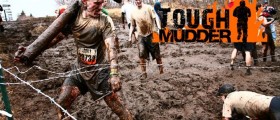






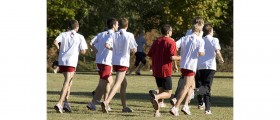





Your thoughts on this
Loading...